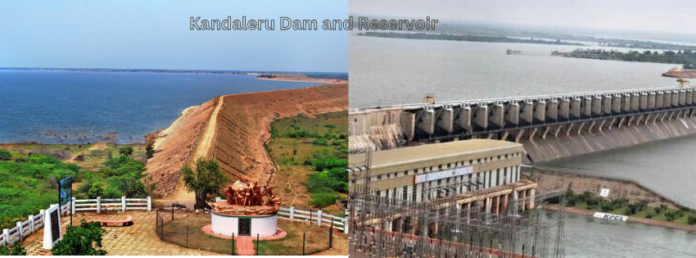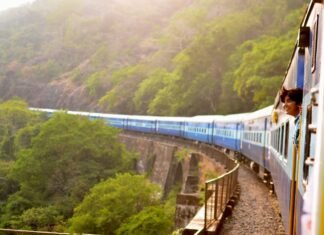Kandaleru Dam is one of the largest earthen dams in India and an essential water source in Andhra Pradesh. Built on the Kandaleru River, a tributary of the Penna River, this dam plays a key role in irrigation, flood control, and water supply. It is a part of the Telugu Ganga Project, which supplies drinking water to Chennai and supports agricultural activities in Andhra Pradesh.
Surrounded by lush greenery and scenic landscapes, Kandaleru Dam also attracts visitors who admire its serene reservoir and engineering marvel.
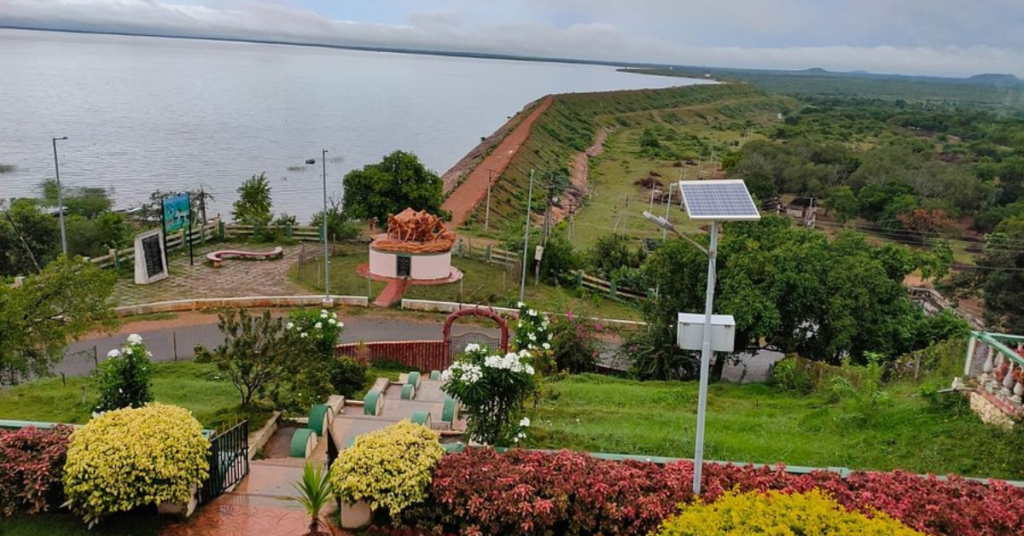
Key Details about Reservoir
- Location: Nellore district, Andhra Pradesh
- Built on: Kandaleru River (a tributary of the Penna River)
- Purpose: Irrigation, drinking water supply, and flood control
- Type: Earthen Dam
- Height: 49 meters (160 feet)
- Length: 12 kilometers
- Storage Capacity: 68 TMC (thousand million cubic feet)
- Reservoir Area: Spreads across a large region with scenic beauty
- Significance: Part of the Telugu Ganga Project, supplying water to Chennai
- Construction Year: 1983 (as part of the Telugu Ganga Project)
ALSO READ: Somasila Dam – A scenic reservoir ideal for picnics and boating
Purpose of Kandaleru Dam
The dam was built to serve multiple purposes, making it one of the most important dams in South India.
- Irrigation: To provide water for agricultural lands in the Nellore district, supporting the cultivation of crops like paddy, sugarcane, and pulses.
- Drinking Water Supply: To supply clean drinking water to nearby towns and villages.
- Flood Control: To regulate the flow of the Kandaleru River during the monsoon season, preventing floods in downstream areas.
- Water Supply to Chennai: As part of the Telugu Ganga Project, the dam also supplies water to Chennai city through the Kandaleru-Poondi Canal.
- Groundwater Recharge: The dam helps maintain underground water levels, reducing the risk of droughts. It supports local wells and agricultural water sources.
- Hydropower Potential: Although the dam does not have a power plant, its water resources could be used for hydroelectric generation in the future.
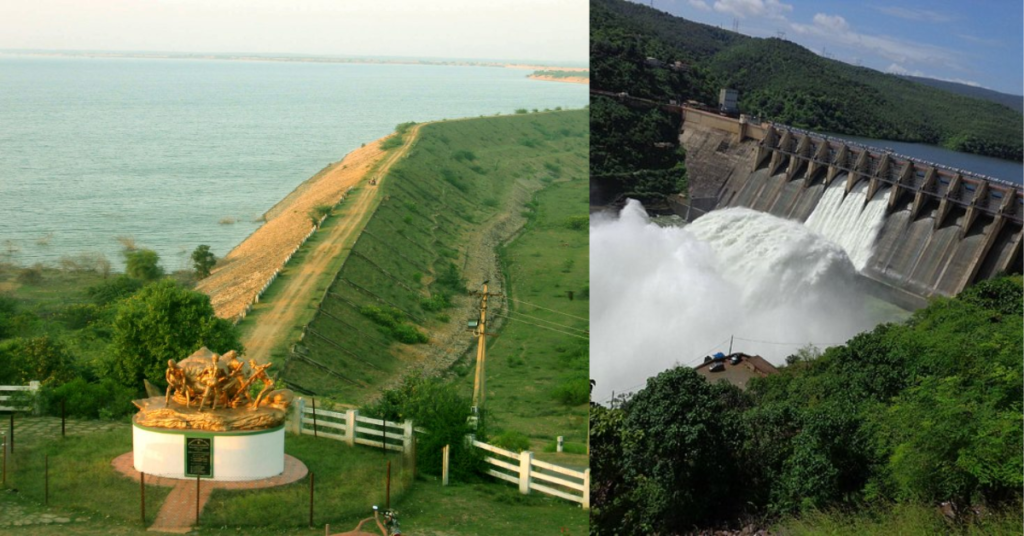
Construction of Kandaleru Dam
The construction began in 1977 and was completed in 1987. It was built by the Andhra Pradesh Irrigation Department to address the water needs of the region. The project was part of a larger effort to improve water management and support agriculture in Andhra Pradesh.
Key Construction Features:
- Built using earthen materials (soil and rocks), making it one of the largest earthen dams in India.
- Spanning 12 kilometers, it is one of the longest reservoirs in the country.
- Connects with the Somasila Reservoir, ensuring smooth water distribution.
- A network of canals and tunnels transports water to irrigation lands and Chennai.
- Designed to handle high water pressure, ensuring long-term durability.
The Telugu Ganga Project, involving Andhra Pradesh, Tamil Nadu, Karnataka, and Maharashtra, played a crucial role in its development.
Size and Capacity of Reservoir
Kandaleru Dam has an enormous water storage capacity, making it a vital reservoir for multiple purposes.
- Height: 49 meters (160 feet)
- Length: 12 kilometers
- Storage Capacity: 68 TMC (thousand million cubic feet)
- Reservoir Area: Spreads over a vast landscape
- Spillway Capacity: Designed to release excess water safely
The dam can store enough water to support farming, drinking water needs, and flood control efforts for several months.
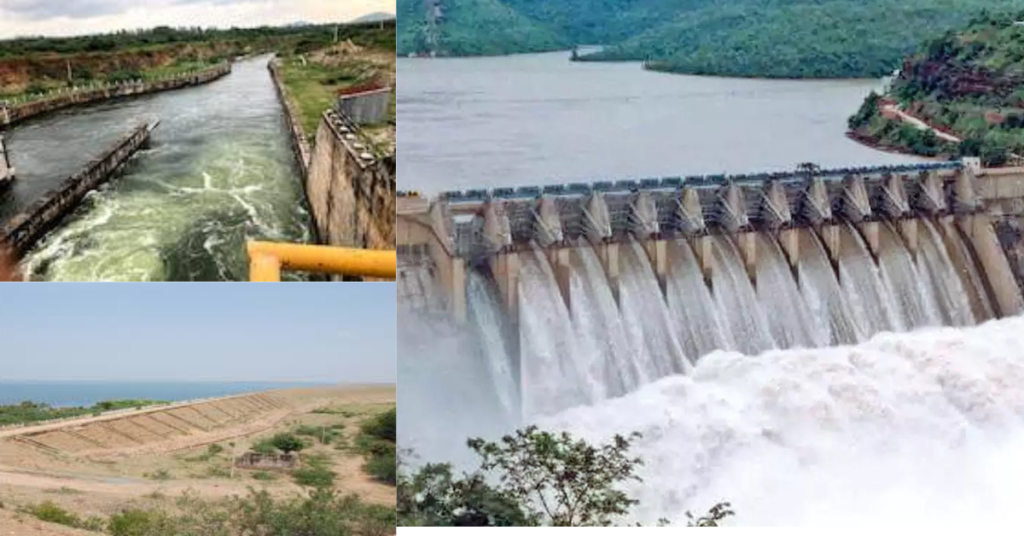
Irrigation Network of Kandaleru Dam
Kandaleru Dam is a lifeline for farmers in Andhra Pradesh, supplying water through a well-organized canal system.
- Water is distributed to agricultural fields, helping paddy, sugarcane, and groundnut farming.
- Supports Nellore, Chittoor, and other districts, ensuring year-round water availability.
- Works in coordination with Somasila Reservoir, forming a strong irrigation network.
- Plays a vital role in the Kandaleru-Poondi Canal System, which supplies water to Tamil Nadu.
This system ensures efficient water use and improves agricultural productivity in the region.
ALSO READ: KothaKoduru Beach – A peaceful beach known for its golden sands.
Flood Control
Kandaleru Dam helps protect villages and agricultural lands from flooding during the monsoon season.
How Kandaleru Dam Helps in Flood Control:
- Stores excess rainwater, preventing it from overflowing into villages.
- Releases water slowly, reducing the risk of sudden floods.
- Maintains river flow, preventing soil erosion and damage to nearby land.
- Acts as a buffer, absorbing excess water and protecting downstream regions.
This effective flood control system saves lives, crops, and properties during heavy rains.
Water Supply to Chennai and Andhra Pradesh
Kandaleru Dam plays a key role in supplying drinking water to Chennai and Andhra Pradesh.
How Water Reaches Chennai:
- Water is channeled through the Kandaleru-Poondi Canal.
- Travels over 150+ kilometers to reach Poondi and Red Hills Reservoirs in Chennai.
- The Telugu Ganga Project ensures a steady water supply to Chennai, reducing water shortages.
This project benefits millions of people in Chennai, ensuring a reliable drinking water source.
Environmental Impact of Kandaleru Dam
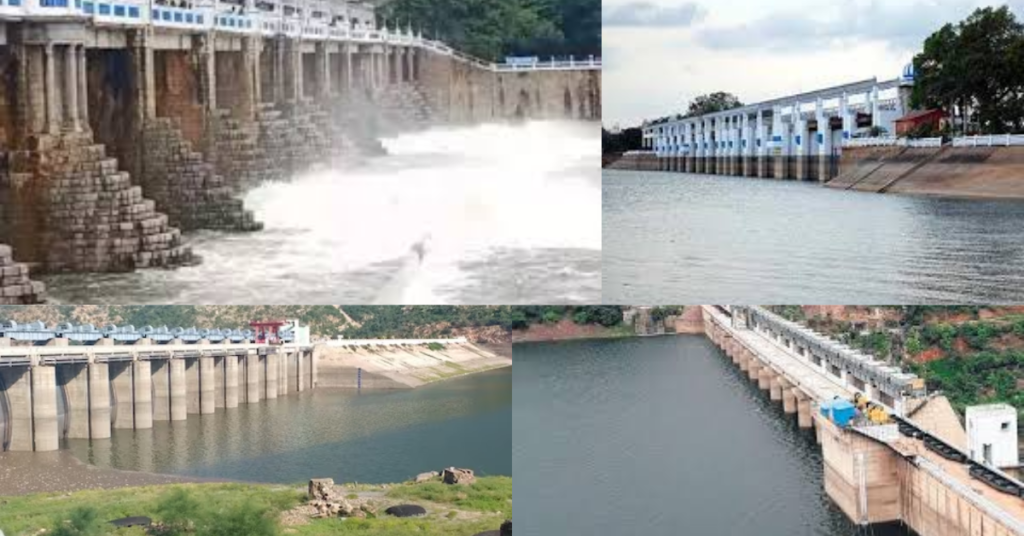
Like any large dam, Kandaleru has both positive and negative environmental effects.
Positive Impact:
- Conserves water, ensuring sustainable use for farming and drinking.
- Prevents floods, protecting homes and crops.
- Supports aquatic life, creating a new habitat for fish and birds.
- Boosts groundwater levels, improving overall water availability.
Negative Impact:
- Disrupts river flow, affecting local ecosystems.
- Leads to the relocation of some villages due to construction.
- Seasonal water shortages can occur if not managed properly.
Authorities are now working on sustainable water management practices to balance these effects.
Recent Developments
The government is continuously improving Kandaleru Dam to enhance efficiency and sustainability.
- Telugu Ganga Project: Kandaleru Dam is a key component of this project, which aims to supply water to Chennai and other drought-prone areas.
- Modernization: The dam’s infrastructure has been upgraded to improve its efficiency and water storage capacity.
- Tourism: The scenic beauty of the dam and its surroundings has made it a popular tourist destination. The government is promoting tourism by improving facilities and accessibility.
- Maintenance: Regular maintenance work is carried out to ensure the dam remains in good condition and continues to serve its purpose effectively.
These upgrades ensure better water management and long-term benefits.
How to Reach Kandaleru Dam
By Road:
Kandaleru Dam is well connected by road. You can drive or take a bus from major cities like Nellore (60 km) or Tirupati (100 km). Taxis and private vehicles are also available.
By Rail:
The nearest railway station is Gudur Junction (about 50 km away). From there, you can hire a taxi or take a local bus to the dam.
By Air:
The nearest airport is Tirupati Airport (around 110 km away).
The best way to visit Kandaleru Dam is by road, as it allows you to enjoy scenic views along the way.
Conclusion
Kandaleru Dam is a remarkable engineering project that plays a crucial role in irrigation, flood control, and water supply. It supports farmers, provides drinking water to Chennai, and prevents floods, making it one of Andhra Pradesh’s most important dams.
With continuous improvements and sustainable water management, Kandaleru Dam will continue to be a key water resource for generations to come.
Frequently Asked Questions
Kandaleru Dam is located in the Nellore district of Andhra Pradesh, India.
It provides irrigation, drinking water supply, and flood control.
It is part of the Telugu Ganga Project, supplying water to Chennai.
The dam has a capacity of 68 TMC (Thousand Million Cubic feet).
Yes, it regulates water flow and helps prevent floods in the region.

